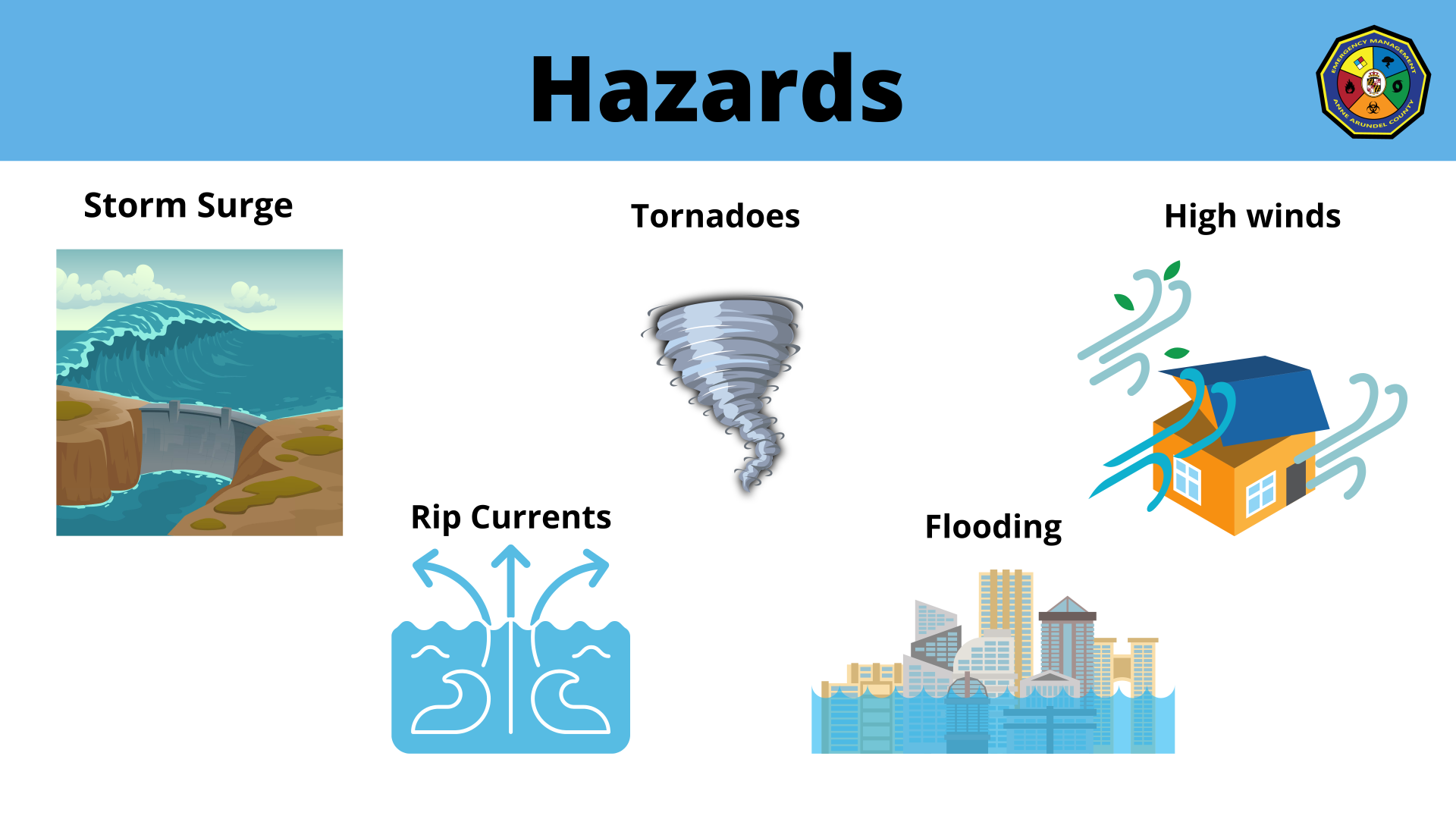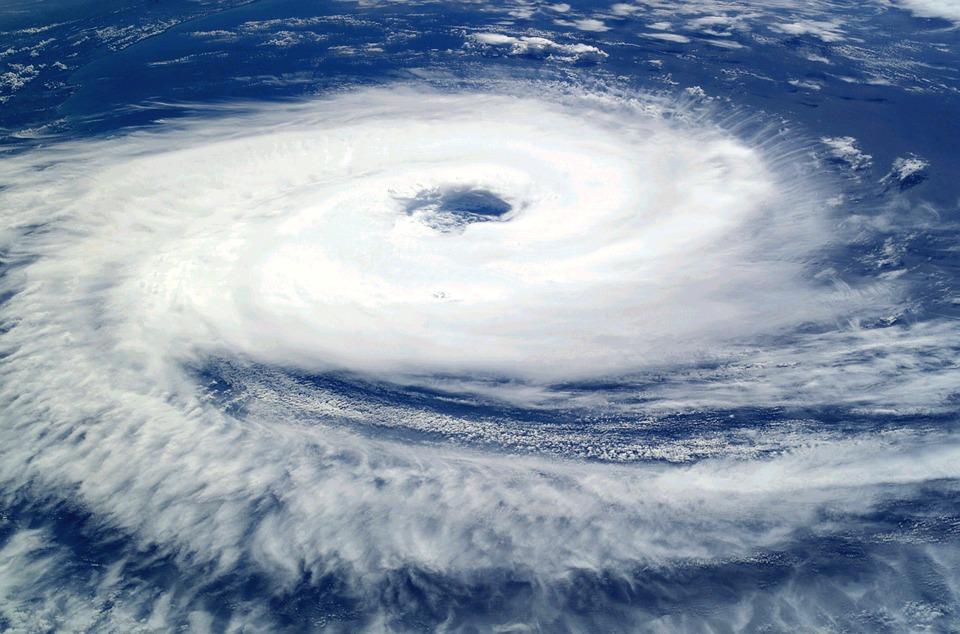Tropical storms are low-pressure systems with maximum sustained surface winds ranging from 39-73 mph, while hurricanes have maximum sustained surface winds of 74 mph or greater. Both are massive storm systems that form over the water and move towards the land which can cause high winds, heavy rainfall, storm surge, coastal and inland flooding, rip currents, and tornadoes.

Anne Arundel County has experienced multiple significant hurricanes and tropical storms including Sandy, Isabel, and Irene. Our County has also experienced major damage from the remnants of tropical storms spawning tornadoes such as Isaias and Ida. By knowing what actions to take before storms approach, monitoring when the storm will be in your area, and having a plan for after a hurricane or tropical storm passes through, you can greatly improve your chance of survival. Prepare now by following the 4 Steps of Emergency Preparedness:
- Make a Plan - If you don’t have one already, now is the time to create an emergency plan for you and your family! Your plan should take into consideration any special needs your family may have including those for young children, older adults, those with access or functional needs, and pets. Don’t forget to plan to evacuate if instructed by local officials! For more information on what you should include in your plan, visit ready.gov/plan.
- Build a Kit - One of the most critical steps you can take to sustain yourself and your family during a disaster is to create an emergency kit before disaster strikes. An emergency go kit contains items you might need during an emergency to sustain yourself and your family. Check out this video for tips and items to include in your emergency go kit. Pepper the preparedness Pup also has tips for kids in this video!
- Stay Informed - You should Know Your Zone before a storm strikes to help you avoid unnecessary evacuation travel, reduce traffic, and ease overcrowding at emergency shelters. Ensure you have the proper insurance coverage for your home because the cost of insurance is a drop in the bucket compared to the cost of damage after a storm. We also urge you to sign up for our CivicReady Emergency Alerts to receive updates, warnings, and instructions right to your phone or email.
- Get Involved - Get involved in emergency preparedness by helping your community and volunteering! Request a presentation or outreach booth to come speak about emergency preparedness at your next event. Check us out on social media and help us spread the word by sharing our posts!

